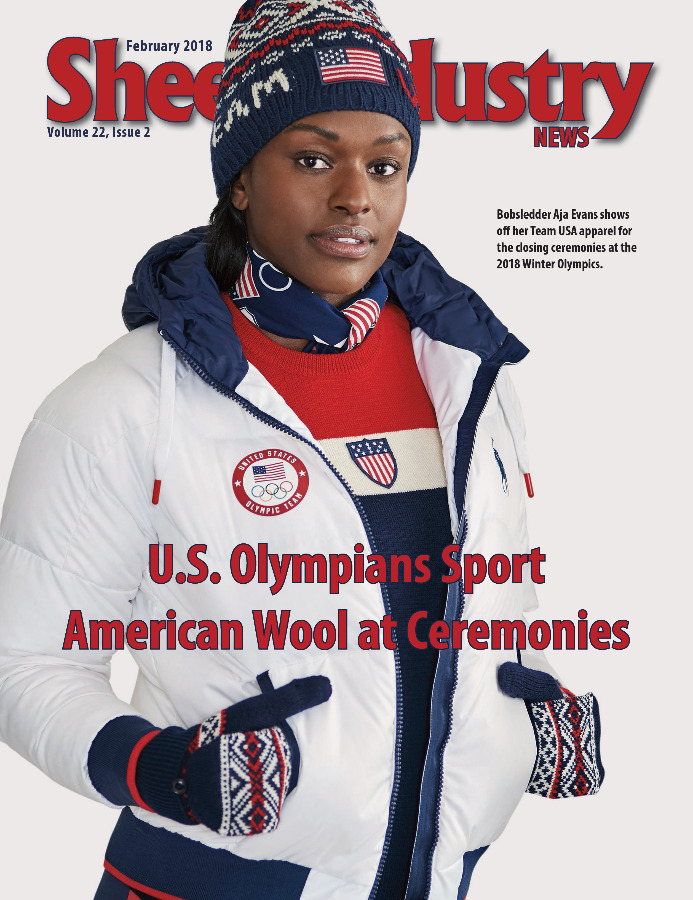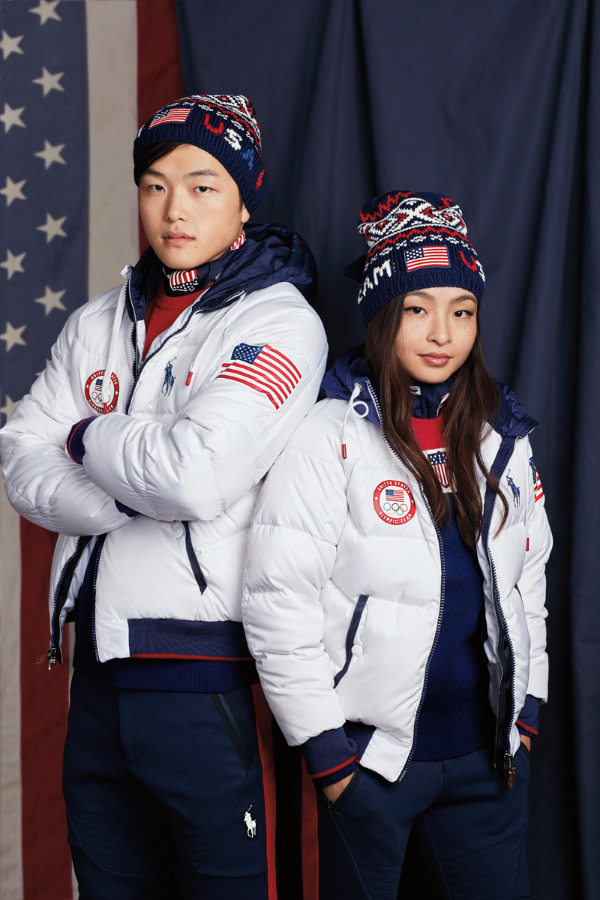
- February 2018
- President’s Notes
- Jerry King Cartoon
- U.S. Olympic Team Turns to American Wool to Stay Warm
- Let’s Grow Webinars Draw Viewers
- Sheep Improvement Center Awards $149,000 in Grants
- ALB Accepting Applications for Local Promotional Funds
- Around the States
- Obituary: Leroy Keese
- Market Report
- Katahdins Develop KATPlus Ewe Program
- Canada Lynx May Be Delisted
U.S. Olympic Team Turns to American Wool to Stay Warm
Designers at Ralph Lauren understand that cold temperatures go hand-in-hand with winter sports, but organizers for the 2018 Winter Olympics in Pyeongchang, South Korea, fear record-setting evening lows as the world takes part in both the opening and closing ceremonies on Feb. 9 and Feb. 25, respectively.
 A temporary, open-air stadium will play host to the two events that draw the largest crowds of the games’ three-week run – including a majority of the athletes there to compete. Organizers are anxious that “feels-like” temperatures factoring in temps and wind could dip below the lowest known ceremony record of -11 degrees Celsius (12 degrees Fahrenheit) from Lillehammer, Norway, in 1994.
A temporary, open-air stadium will play host to the two events that draw the largest crowds of the games’ three-week run – including a majority of the athletes there to compete. Organizers are anxious that “feels-like” temperatures factoring in temps and wind could dip below the lowest known ceremony record of -11 degrees Celsius (12 degrees Fahrenheit) from Lillehammer, Norway, in 1994.
The United States Olympic Team, however, isn’t sweating over the prospect of arctic conditions thanks to the heavy dose of American wool that Ralph Lauren features in its official team outfits for the opening and closing ceremonies.
“Ralph Lauren expects it will be fairly cold in Pyeongchang, and the natural choice is wool,” said Jeanne Carver of Imperial Stock Ranch in Oregon. National Spinning Company used the ranch’s wool – blended with U.S. Territories wool as needed – to create the yarn for several items included in the official U.S. team outfits for both the opening and closing ceremonies. “As wool producers, we are well aware of the attributes of wool for cold weather wear. And, as I’ve always said, wool is the miracle fiber. It’s a great choice for Team USA.”
The opening ceremony outfit will include a 100 percent American wool hat, as well as a sweater made from 70 percent American wool and 30 percent American alpaca.
Wool has an even larger presence in the official outfit of the closing ceremonies, where United States olympians will wear a sweater, hat and mittens all made from 100 percent American wool. The closing ceremony outfits were unveiled in late 2017 during a segment on NBC’s The Today Show. Gus Kenworthy (freestyle skiing), Jamie Anderson (snowboarding), Alex Shibutani and his sister, Maia, (figure skating) were all included in the segment.
The relationship between Ralph Lauren and Imperial Stock Ranch began in the summer of 2012 when the fashion designer reached out to the ranch while researching a made in America program. Imperial Stock Ranch then provided the wool yarn for a Team USA sweater worn during the opening ceremony at the 2014 Winter Olympics in Sochi, Russia. The company has maintained a relationship with the family-run Imperial Stock Ranch since that time.
National Spinning joined the team in 2015 after proposing a licensing partnership built on Imperial Stock Ranch’s history and wool production. Together, the two met with Ralph Lauren’s design and production teams, and later that year National Spinning launched its Imperial Stock Ranch American Merino wool yarn program. The yarns were selected for the Team USA Collection for the 2018 Olympics.
Four years ago, Ralph Lauren chose to tell the story of Imperial Stock Ranch and the process involved in creating the wool sweater for Team USA. The video is available at Youtube.com/watch?v=z7BDDj_NBEQ.
“We’ve been privately owned and a family operation for 142 years,” Carver said in the video. “I began to share our history, and that was the beginning. Things like this don’t happen to people like us. When Ralph Lauren came along and placed an order for this Olympic project, it doubled our yarn sales. To be a part of this process and that story gives us great pride, so we’re very honored to be part of the project.”
The fact that wool is being used extensively in the 2018 uniforms, “speaks to both the timeless qualities, and relationship, of wool and humankind,” Carver said.
“Telling the story behind the uniforms (in the 2014 video) made everyone who was part of making them connected to Team USA in a way we would never have been.”
That connection will roar to life again this month when Team USA marches into both the opening and closing ceremonies in South Korea.

